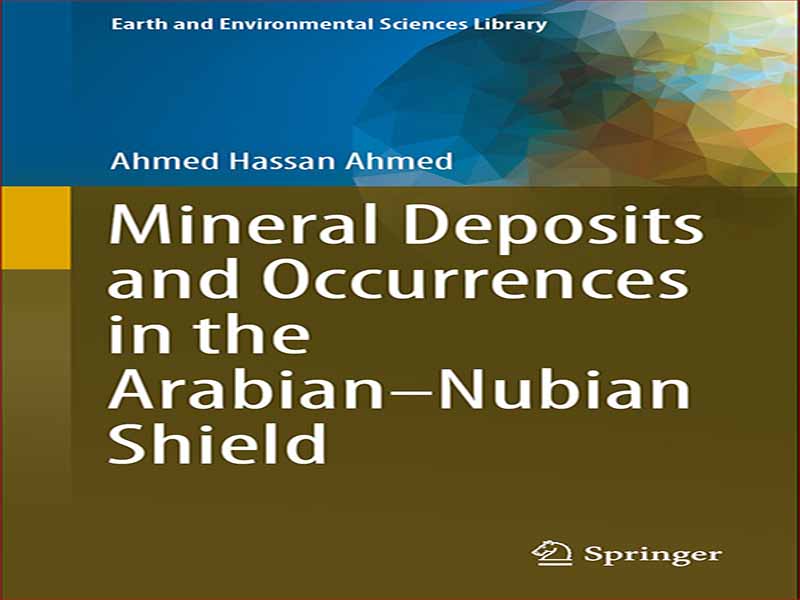- عنوان: Mineral Deposits and Occurrences in the Arabian–Nubian Shield
- نویسنده: Ahmed Hassan Ahmed
- حوزه: معدن
- سال انتشار: 2022
- تعداد صفحه: 532
- زبان اصلی: انگلیسی
- نوع فایل: pdf
- حجم فایل: 32.9 مگابایت
یک اجماع کلی وجود دارد که بخشهای مختلف پوسته قارهای در طول تاریخ زمین سه بار به طور کامل با هم ادغام شدند و سه قاره غولپیکر به نامهای “کلمبیا”، “رودینیا” و “پانگه آ” را تشکیل دادند. علاوه بر این سه قاره غولپیکر (ابر قارهها)، روند تجمعها چندین بار در طول تاریخ زمینشناسی اتفاق افتاده بود که «بعضی» (اما نه همه) بخشهای پوسته قاره را جمع کرد و منجر به تشکیل «کراتونهای» بزرگ شد. و بلوک های قاره ای در یک دوره زمانی قبل از تشکیل ابرقاره غول پیکر “کلمبیا”. این “ابر قاره ها” و “کراتون ها” اکثریت سطح زمین باستانی را تشکیل می دهند و نقش مهمی در تاریخ زمین بازی می کنند. «کراتونهای» قارهای که «پیش قارهها» نیز نامیده میشوند، تودههای قارهای بزرگ و پایدار هستند که در طول میلیاردها سال پایدار بودهاند. مناطق کراتونی دارای پوسته ضخیم و ریشه های لیتوسفری عمیقی هستند که به چند صد کیلومتر در گوشته زمین رسیده است تا کراتون ها پایداری طولانی مدت داشته باشند. زیرزمین کریستالی پرکامبرین و سنگهای دگرگونی با عیار بالا در نواحی کراتونی «سپر» نامیده میشوند، در حالی که پوشش رسوبی گسترده این مناطق «سکو» نامیده میشود. هم سپرها و هم سکوهای توده های خاص قاره ای کراتون ها را تشکیل می دهند. مناطق کراتونیکی از نظر اقتصادی مهم هستند، جایی که بیشتر الماس های جهان و بسیاری از ذخایر معدنی ارزشمند دیگر از مناطق کراتونی تولید می شوند. علاوه بر این، این تودههای کراتونی قدیمی یک رکورد کامل از تاریخ طولانی زمین را ذخیره میکنند که اطلاعات بسیار خوبی را در اختیار ما قرار میدهد.
There is a general consensus that the different parts of the continental crust merged together in their entirety three times throughout the Earth’s history, forming three giant continents, namely “Columbia,” “Rodinia,” and “Pangaea.” In addition to these three giant continents (Supercontinents), the process of assemblies had taken place several times during the geologic history, which assembled “some” (but not all) parts of the continental crust and resulted in the formation of large “Cratons” and continental blocks in a period of time prior to the formation of the giant “Colombia” supercontinent. These “Supercontinents” and “Cratons” constitute themajority of the ancient Earth’s surface and play an important role in Earth’s history. The continental “Cratons,” also called “proto-continents,” are large and stable continental masses that have been stable over a billions of years. Cratonic areas have a thick crust and deep lithospheric roots that reached few hundreds kilometers into the Earth’s mantle to make the cratons have long-time stability. The exposed Precambrian crystalline basement and high-grade metamorphic rocks of the cratonic areas are called “Shields,” whereas the extensive sedimentary cover of these areas is called “Platforms.” Both shields and platforms of specific continental masses form the cratons. Cratonic areas are economically important where most of the world’s diamonds and many other valuable mineral deposits are produced from cratonic areas. Furthermore, these old cratonic masses store a complete record of the long Earth’s history, which provide us with great information.
این پیپر هاروارد را میتوانید بصورت رایگان از لینک زیر دانلود نمایید.
Download: Mineral Deposits and Occurrences in the Arabian–Nubian Shield




































نظرات کاربران